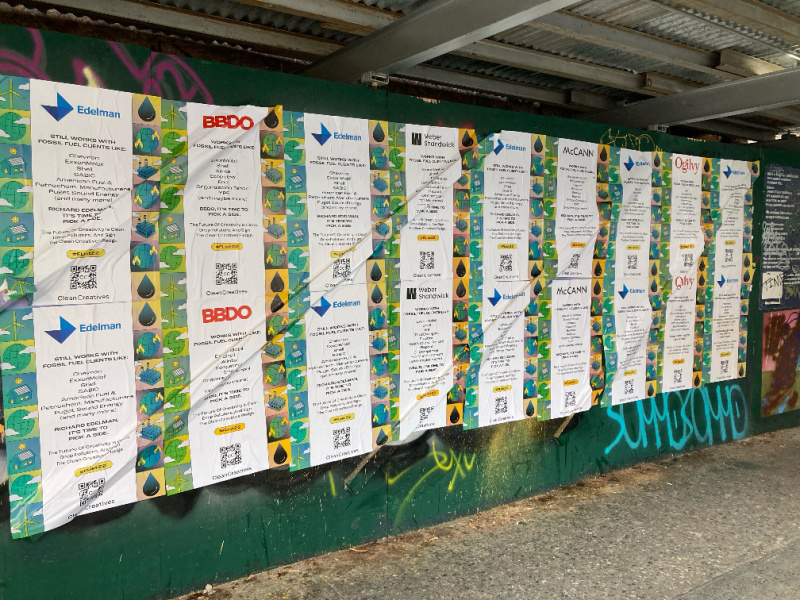HowNow: How can you persuade people to turn their efforts away from well paying clients to alternative sources of income and expression?
Duncan: It’s in the self interest of agencies. Firstly, their young talent is not interested in doing this – and they see it not just as something they don’t want to do but something they actively don’t want to be associated with. Most young creatives probably participated in a climate strike and have spent their entire lives understanding climate change and waiting for governments to do something about it. When they see that their workplaces are associated with stopping governments from doing that, they’re not interested in being a part of that. Young talent is a critical part of this conversation and I think they’re going to make themselves extremely well known on this subject.
Secondly, there is the recognition that these are the companies of the past. A decade ago, Exxon was one of the richest companies in the world. They made more money every quarter than any company had ever made before. Last year, they got removed from the Dow index. There’s a rapid decline in the fortunes of these companies, and what they’re fighting over in their messaging is to extend a dying business model. They want it to last for as long as they can. It’s just not a great future source of income, particularly when other major advertisers such as General Motors or VW and a lot of the automotive sector are shifting away from fossil fuels. There’s a developing conflict of interest between major advertisers that are integrating a version of climate action [into their practice] because those companies need policies that Shell, Exxon, BP, Chevron, etc are actively opposing. That’s the purpose of fossil fuel advertising: to oppose those policies, to make those policies harder to pass.
HowNow: Talk about greenwashing.
Duncan: We had a great conversation a few months ago with some PR professionals about how they identify greenwashing campaigns. It’s about asking the right questions. There’s very unlikely to be a checklist so it’s more like asking whether an initiative endorsed by the entire company? Is it designed to reflect a client’s business model or is it a small piece of work that they’re using to highlight, in contrast to other things? Is the executive body or just the marketing department?
And we really encourage people to ask those questions strategically. That’s the way this moves forward: as a dialogue, with pointed questions. Fossil fuel companies are the biggest greenwashers on the planet. They are the biggest polluters and they use their advertising to distract attention from that. They’re pioneers in misinformation, but they’re not the only people who do it and this is the right place to begin the discussion. Because they are the worst offenders in this context.
HowNow: In London, Shell is one of the major sponsors of a climate solutions exhibition in the Science Museum. Is this something you come across?
Duncan: The goal of these companies is not to deny the existence of climate change. Their goal is to make themselves seem like they’re part of the solution, when they’re not. So they are targeting their work with sustainability-focused advertisers because that’s how they can shape the message about their reputation. They’re completely wrong about that. We can see their public disclosures and how much money they spend on renewable energy – and it’s very low. Their goal is to make it seem like they’re reasonable participants in this conversation but they are actually the opponents, the enemy.
HowNow: There’s a gap between reality and public knowledge that creatives can engage with, in a fundamental way. Because people desperately want to believe that these companies are part of the solution they don’t want.
Duncan: I had this wonderful dialogue with an agency while giving a presentation about our work. I asked, guess what percentage of [fossil fuel companies’] capital expenditures go into renewable energy? Some people said 15% and 10%. Some people went as low as three because they’re cynics. But none of them were cynical enough. The answer is less than 1%. It’s eye-popping. The first target of disinformation by these companies has to be their agencies. Creators play a really important role because they are the bottleneck. This is the pivot point at which reputations get developed. That’s why we’re focusing our efforts there.






